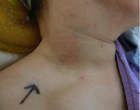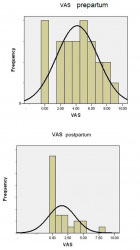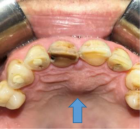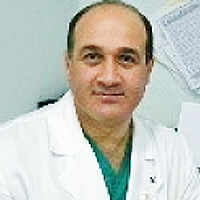Current Issue (Volume - 9 | Issue - 3)
Extracorporeal Shock Wave Combined with Traditional Chinese Medicine Bone-setting Manipulation for External Humeral Epicondylitis: A Randomized Clinical Trial
Published on: 23rd July, 2024
Objective: The purpose of this study was to evaluate the clinical efficacy of extracorporeal shock waves combined with traditional Chinese medicine bone-setting manipulation for external humeral epicondylitis. Methods: Ninety-two patients with external humeral epicondylitis were randomly divided into an observation group and a control group. Patients in the control group were treated with extracorporeal shock waves while those in the observation group with traditional Chinese medicine bone-setting manipulation based on the control group. Patients in both groups were evaluated by the Visual Analogue Scale (VAS), Mayo Elbow Performance Score (MEPS), and Disabilities of the Arm, Shoulder, and Hand Questionnaire (DASH) before and after treatment. The inflammatory factors such as IL-6, IL-10, TNF-ɑ, and clinical outcomes were contrasted before and after treatment. Results: There were statistically significant differences in VAS score, MEPS score, and DASH score between the two groups before and after treatment (p < 0.05). The observation group exhibited a more pronounced improvement in each score compared to the control group. Post-treatment, the inflammatory factors of both groups were significantly lower than pre-treatment levels (p < 0.05), with the observation group showing a more noticeable decrease. The overall effectiveness of the observation group was higher than that of the control group, and the difference was statistically significant (p < 0.05).Conclusion: The combination of extracorporeal shock wave therapy and traditional Chinese medicine bone-setting manipulation can effectively alleviate pain symptoms and improve dysfunction caused by external humeral epicondylitis, while also reducing inflammatory factor expression. This combined treatment may prove more effective than extracorporeal shock wave therapy alone.Clinical Trial: Registration: ChiCTR2200066075.
Causal Inference for Scoliosis and Strabismus: A 2-sample Mendelian Randomization Study
Published on: 24th July, 2024
Background: Some studies have shown an association between spinal curvature and strabismus, but the genetic association has not been clarified. Therefore, the present study is proposed to be a Mendelian randomization study aiming to investigate the genetic causal association between spinal curvature and strabismus.Purpose: Genetic causal associations between strabismus, convergent concomitant strabismus (Ccs), Divergent concomitant strabismus (Dcs), Other specified and unspecified strabismus (Osus), Other strabismus (Os) and spinal curvature were investigated by a bidirectionalMendelian randomization study to provide a basis for the prevention and treatment of spinal curvature.Methods: Significant and independent Single Nucleotide Polymorphisms (SNPs) in genome-wide association studies were selected as Instrumental Variables (IVs) for Mendelian Randomization (MR) analysis. Inverse Variance Weighted (IVW), MR-Egger regression, Weighted Median (WME), Simple Mode (SM), and weighted mode (WM) were used to analyze causal association; Heterogeneity and multiplicity tests were also performed and analyzed using the leave-one-out method to assess the stability of the results.Results: MR and reverse MR were utilized to assess the impact of scoliosis on strabismus, revealing that the 95% confidence intervals of all instrumental variables’ OR values spanned 1 and the p values were all above 0.05. These results indicate a lack of evidence supporting a causal relationship between scoliosis and strabismus. Conclusion: There is currently no conclusive evidence of a genetic causal relationship between scoliosis and strabismus, including their subtypes. Further laboratory studies are needed to confirm these findings, and future research with larger sample sizes is necessary to provide more robust support.
Return to Play in High-level Athletes after SARS-CoV-2 Infection
Published on: 29th July, 2024
In sports medicine, the recovery process for injuries to the musculoskeletal system has been well established, including the recovery time until the athlete can compete again to prevent relapses. These decisions support the sports physician in acting with greater confidence. However, there are no clear criteria and protocols for other systemic diseases. In the following study, we report our experience and suggest an action protocol for a professional basketball team.
Game-Changer: Unlocking Student-Athlete Success with Sleep and Later School Start Times
Published on: 14th August, 2024
This editorial explores the crucial yet often overlooked role of sleep in enhancing student-athlete performance and well-being. It highlights sleep’s impact on physical recovery, cognitive function, and emotional stability, emphasizing the unique benefits for athletes. The editorial examines the detrimental effects of early school start times on adolescent sleep patterns and their subsequent impact on academic and athletic performance. By advocating for policy changes that prioritize sleep, such as delaying school start times, this editorial presents a novel approach to optimizing student-athlete success. Through a synthesis of current research and practical insights, it urges stakeholders in education and sports to recognize and act upon the foundational importance of sleep, positioning it as a key component of athletic and academic excellence.
The Effect of Shoulder Immobilization Position on Outcomes Following Rotator Cuff Repair: A Scoping Review
Published on: 20th August, 2024
Introduction: There has been growing interest in determining the influence of post-operative immobilization posture and rehabilitation protocol on healing rates and clinical outcomes. Current consensus calls for the use of an immobilization device post-operatively, which commonly comes in the form of a standard sling or an abduction brace with the arm positioned in varying degrees of abduction. There is a lack of high-level evidence in the literature to recommend one type of immobilization device or arm position over another. Objectives: This study aimed to summarize the current clinical and biomechanical evidence for the optimal postoperative positioning and bracing of the arm following arthroscopic rotator cuff repair. Methods: A comprehensive search of the electronic databases EMBASE, MEDLINE, and PubMed was performed using a combination of the following keywords and medical subject heading (MeSH) terms: ‘arthroscopic’, ‘rotator cuff repair’, ‘sling’, ‘brace’ and ‘immobilization’. This systematic review was conducted following the Preferred Reporting for Systematic Reviews and Meta-analysis (PRIMSA) guidelines. Two reviewers performed an independent assessment of the methodological quality of each eligible clinical study using the Methodological Index for Non-Randomized Studies (MINORS).Results: Based on current biomechanical evidence, placement of the arm into an abducted position following rotator cuff repair was found to be favorable. An abduction angle of 30° was associated with lower strain on the repair while maintaining appropriate contact pressure at the footprint. However, the use of an abduction brace did not result in a clinically significant improvement in long-term PROM, ROM, and re-tear rates when compared to a traditional sling in clinical studies.Conclusion: Despite observing favorable outcomes with abduction bracing after rotator cuff repair in biomechanical studies these findings were not reproduced in clinical studies. However, current clinical studies are comprised of small sample sizes, varying tear sizes, and significant heterogeneity in both, the degree of abduction and forearm rotation. Future studies should be directed towards prospectively investigating the effect of immobilization position among patients with similar rotator cuff tear sizes.
Assessment of Nutritional Knowledge, Alcohol and Tobacco Consumption in Amateur and Elite Youth Football Players
Published on: 6th September, 2024
Introduction: Nutrition is increasingly recognized as a key component of optimal sports performance. On the other hand, insufficient and continuous food intake can compromise athletic performance and success where Nutritional Knowledge can play a leading role.Methods: One hundred and three youth athletes from 6 different clubs belonging to the District, Honor, and National Championship participated in this study. To assess Nutritional Knowledge, consumption of alcohol and tobacco the Abridged Nutrition for Sport Knowledge Questionnaire was applied.Results: The percentage of Nutritional Knowledge obtained in the District Championship was 31.25%, in the Honors it was 35.56% and in the National Championship it was 35.02%. No significant differences were found between the Nutritional Knowledge of athletes. In turn, there were statistical differences in the consumption of alcohol and tobacco among the athletes of the 3 Championships, with the District division having the highest percentage of smokers (100%) and alcohol consumers (42.6%).Conclusion: It is essential to increase the Nutritional Knowledge observed in these young athletes since it can have an influential role in their food choices.
Emerging Trends in Sports Cardiology: The Role of Micronutrients in Cardiovascular Health and Performance
Published on: 6th September, 2024
Micronutrients are critical components of an athlete’s diet, affecting both performance and cardiovascular health. This review summarizes current studies on the importance of micronutrients in sports cardiology, focusing on their effects on energy metabolism, antioxidant defense, and cardiac function. Key findings emphasize the relevance of micronutrient sufficiency in improving athletic performance and avoiding long-term health issues linked to strenuous training programs. Micronutrients like B vitamins help energy generation pathways, while antioxidants like C and E reduce exercise-induced oxidative damage. Minerals like magnesium and iron are important for muscle function and oxygen delivery, which are required for endurance and recovery. Effective nutritional practices include balancing food intake and, if required, supplementing under medical supervision to address individual needs and enhance performance results. Future research paths will focus on individualized nutrition techniques based on genetic and metabolic profiles, allowing for more precise food recommendations for athletes. Collaboration between sports medicine and nutrition disciplines is critical for establishing evidence-based practices and improving cardiovascular health in athletes.

HSPI: We're glad you're here. Please click "create a new Query" if you are a new visitor to our website and need further information from us.
If you are already a member of our network and need to keep track of any developments regarding a question you have already submitted, click "take me to my Query."























































































































































